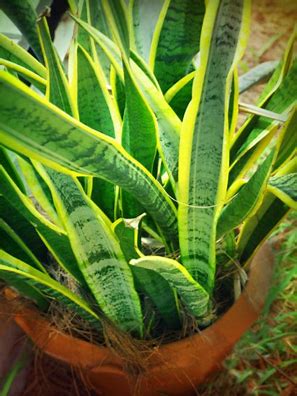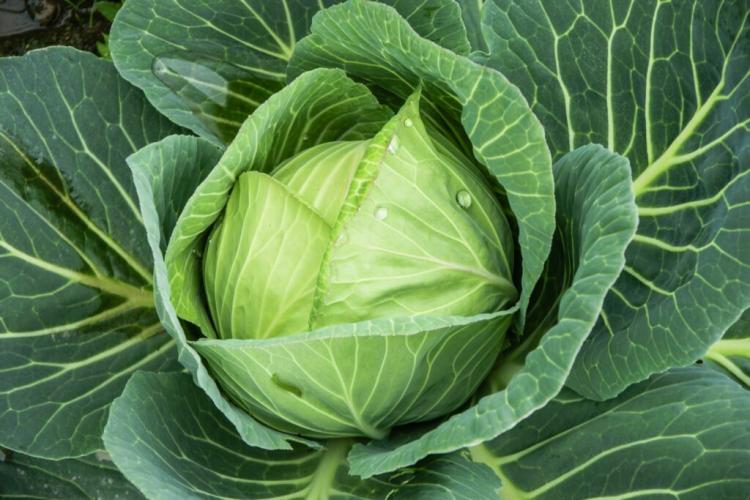How Much Sunlight Does a Snake Plant Need?
A snake plant is very versatile and easy to maintain in your home. Snake plants can thrive in all lighting levels, from low light to bright sunlight.
Snake plants prefer indirect sunlight about 4-6 feet from a window. Ideally, they should have 8-10 hours each day of indirect sunlight. Snake plants can often adjust to different types of light which makes them popular home plants.

What is the best lighting for a snake plant?
Table of Contents
The ideal lighting for snake plants is indirect light from the sun. If you decide to put your plant in a room with direct sunlight such as on a windowsill, it may be too hot. You will need to watch the plant carefully for any changes in its appearance like abnormal leaf color.
When to use artificial lights
Many hours of indirect sunlight are the best lighting option. This plant is so hardy that it can survive and grow with other types of light.
If you do not have anywhere in your home that gets hours of natural light, you can supply light for your snake plant with artificial lights.
Artificial light is best when used on your snake plant for 12-14 hours, which is longer than the recommended sunlight for your plant.
Sometimes you need both natural and artificial lights
Supplementing natural light can provide the light that the snake plant needs for photosynthesis. If you put the plant in a dark room without windows, it will eventually dry up and the dark green leaves will fall off.

What kind of artificial light should I use for my snake plant?
Here are some types of light that will help your snake plants stay healthy and grow if your room doesn’t get enough sunlight:
- Led lights — They provide much more light than incandescent lights. These lights have both blue light and red light. Led grow lights are ideal for plants.Regular lightbulbs are not the best light for snake plants. They produce only red light, and plants need the full light spectrum. Incandescent lights produce more heat than led light bulbs and may be too hot for your plant.

Be careful with your lighting
If you want to try using regular lightbulbs, be sure to place your snake plant away from a lamp with this type of bulb to prevent overheating.
These bulbs are not recommended for snake plants because of the chance of leaf burn.
Fluorescent lights for your snake plant
Other lights such as soft white fluorescent tubes can be used on your mother-in-law’s-tongue or snake plant to supplement low light in your room.
Fluorescent light emits blue light that stimulates leaf growth. These lights should be used with incandescent lights that promote root growth. The combination of light will produce enough indirect light for your snake plant.

How to evaluate the light spectrum
Your snake plant will let you know if it is getting the correct amount of light. One of the most important signs is if your snake plant looks healthy.
A healthy snake plant has firm tall leaves with bright yellow outlines on them The center of each leaf has various green shades with greyish-silver streaks.
A snake plant with sunburn
A snake plant can get leaf burn if it is in direct light. If leaves turn brown and feel dry, your snake plant is trying to tell you that it does not like direct sunlight.
A snake plant needs a light that does not shine directly on it. It can avoid getting burned if you place it in a less bright spot in your home.
The sunburned spots eventually dry and fall off, leaving holes in the snake plant leaves.
Can snake plants get too much indirect light?

Snake plants thrive on a lot of indirect light. It is only direct sunlight that they do not like most of the time.
Your snake plants will not get too much light as long as the light is indirect. For this reason, it is easy to grow snake plants.
You Might Also Like Does Snake Plants Attract Bugs
The best spot for your snake plants
It’s best to place your snake plants in a brightly lit spot. Be sure that there is no excessive light shining directly on them.
The snake plant thrives when it gets at least some light. Place your snake plants by a south-facing window on a table or plant stand several feet back. This should provide as much light as the snake plants require.

Should I have low light, medium light, or bright light for my snake Plants?
Low light
Snake plant light requirements may not be met in low-light areas. You usually have to add some additional light to be sure that your snake plants get enough bright indirect light.
You can place the plant in an area where it gets maximum sunlight, even if the sunlight only lasts for a few hours. Then, supplement lighting with led grow lights or a mixture of a regular lightbulb and fluorescent lights.
Symptoms of low light conditions
Snake plants need light and when they don’t get enough light, they have definite changes in their appearance. Here are some of these changes that occur without enough bright light:
- Leaves change from yellow to brown leaf edges.
- They develop abnormal leaf color.
- Snake plants lose their upright look and begin to droop.
- Your snake plants’ growth may be only leggy growth.
- They develop brown tips on their leaves.

Medium light conditions
Medium bright light is good for your snake plant. Some plants like the sun shining directly on them, but not your snake plant.
Place your snake plant by a window that has bright indirect light. During the winter when days are short, you may need to use additional lighting to reach the 8-10 hours of bright indirect sunlight a snake plant requires.
You can also use a sheer curtain on a window and place your snake plant nearby. This provides the natural light the plant needs yet it is not directly on your plant.

Can snake plants be grown in a dark room?
Snake plants grow in any kind of room, even in a darker room if you add enough light. You need to have a grow light with led bulbs. It is also possible to use a low-heat light source like fluorescent lights with regular lightbulbs.
Without direct sunlight or bright light, the snake plant would have problems.
Can I take my snake plant outdoors in the warm or hot weather?
Like any other green plant, a snake plant can do well outdoors. How much light it receives is key to its health. Too much light may be harmful.
In a short amount of time, you can have a dead plant if you leave the snake plant outside for days of hot direct sun.
Bright indirect sunlight like a shaded area is perfect for a snake plant placed outdoors. Bring the snake plant indoors if the temperature changes and it is too cool for the plant.

Origin of snake plants
Snake plants grow in hot tropical areas in Africa. They are considered to be succulent plants since their leaves fill with water.
Snake plants do get direct light from the sun in tropical areas, but most of the time they are in shaded spots.
The plant’s need for bright indirect light is the same today if you want it to thrive in your home.

Fertilizing your snake plant
Snake plants should be fertilized in the spring. This is their growing season and the best time to fertilize them.
Plant growers use fertilizer to stimulate the plant’s growth. The plant should be fertilized only during the growing season.
In wintertime, snake plants are dormant and do not need fertilizer.
Fertilizer tips from experts
Many experts remind us that snake plants can grow without fertilizer. It is not absolutely necessary like light and water are to the plant.
Experienced gardeners say that diluting the fertilizer to half-strength works best for snake plants and provides the nutrients they may need.
Watering your snake plant
Water is necessary for your snake plant. Experts recommend watering only when the soil is dry. Too much water can result in root rot or other problems that weaken your plant.

How often should you water a snake plant?
Do not water your snake plant unless the soil feels very dry. This plant is a succulent, and so it holds water in its leaves.
Expert gardeners suggest that you may not need to water it at all in the wintertime.
Is a snake plant prone to diseases?
A snake plant is a hardy plant that is popular as a home plant because it seldom gets the diseases that other plants may get.
The most common disease is root rot. It is usually caused by over-watering. Root rot results in soggy black roots on the snake plant.
How to treat root rot
Root rot is not difficult to treat. It involves repotting the snake plant into fresh soil and a new pot with adequate drainage holes.
Before placing it into the new pot, cut off the diseased roots. If you have several snake plants, an individual snake plant may get this disease, but the other plants will not be affected in most cases.
Other diseases in the snake plant
Another common disease in snake plants and other indoor plants like spider plants is an infestation of mealybugs. Your plant may have spots that look like small cotton balls.
One way to rid your snake plant of these pests is to use regular rubbing alcohol on a cotton ball to wipe them off. Test this method in one location before treating the entire plant.
Treat a mealybug infestation when you first notice it. If you let it go, it will spread and you will have a dead plant.

Do snake plants require frequent moving?
The snake plant’s need for the proper amount of light is not difficult. Once you find the best place for your plant, it can stay there unless there is a dramatic weather change.
The exception to this rule is if the snake plant begins to lean toward the light source. In this case, turn the plant every time you water it to ensure enough indirect natural light for your plant.

How many hours can my snake plant tolerate direct sunlight?
Snake plants can survive direct sunlight if you keep a careful eye on them. If they show signs of getting too much light, move them to a shady spot.
If you do not want to be concerned about the placement of your snake plant, place it in a shady spot indoors or outdoors. A snake plant can live and survive in direct sunlight in some cases.
Natural light is the best light for snake plants, but some tolerate direct sunlight without problems.

How can I avoid leggy growth in my snake plant?
Leggy growth in a snake plant refers to the spaces between leaves. These do not look attractive or normal for the plant.
The solution is to put the plant in a place with enough light to allow it to grow fuller. Once the leaves have leggy growth and thin leaves, the only way to get rid of them is to cut them off.
Signs that your snake plant is getting adequate light
If your plant is getting enough sunlight or it has the right light source, it will look its best. Snake plants need very little care to survive. Some people think that they’re almost indestructible.
Here are some signs that you have proper light and not too little light for your snake plant:
- Firm green leaves standing upright
- Lots of markings on the interior of the leaves
- Bright yellow borders

Different varieties of snake plants
There are 15 types of snake plants and each one is unique and beautiful. They have different colors and heights.
Most of these varieties originate from Africa, but snake plants also grow in India, Sri Lanka, and the Arabian Peninsula.
Sansevieria Trifasciata has yellow borders, but this is not true for all snake plants. Some have the same green coloring from side to side.

Other varieties
Bird’s nest varieties are interesting because they have leaves that grow out from the center. The newest leaves are in this part of the plant while older leaves are on the outer part of it.
You can add interest to your home decor by adding a few different varieties of the snake plant in different rooms.

How much light your snake plant gets affects its looks
A healthy snake plant that gets the proper amount of light can look outstanding and beautiful. Some varieties grow up to 10 feet tall in their natural environment.
There are some snake plant varieties that are not green. The Sansevieria Kirkii can have blue leaves and is small and slow growing.
Its leaves are tinted with silver and it has dark streaks in the shape of arrows.
Benefits of having a snake plant in your home
There are some benefits of having a snake plant in your living area including the removal of toxic substances in the air.
This includes cancer-causing pollutants that can harm you over time. These plants release oxygen into your indoor air.
More benefits of snake plants
Snake plants are an inexpensive decorative accessory for your home. They are easy to care for and usually just require light and water.

In feng shui, they are used to bring energy to an area because of their uplifted leaves. Their fresh energy adds charm to your home.
If your home does not have enough light, you can use a grow light in almost any room.
Basically, any house or apartment has the right space for a snake plant. A bathroom vanity, a shelf, or a plant stand has room for this plant.
What it cannot do
There is a lot of mystery surrounding the snake plant. Some people wonder if it repels snakes.
This is one thing that the plant is not able to do.
Origins of the mystery surrounding the snake plant
As we said earlier, this plant originates in Africa. It is used in some areas of this country for religious rituals and for protection.
Scientists brought the plant to Europe in the late 17th century. From there, it came to America and is a popular plant in many homes.
Conclusion
A snake plant is a stylish addition to any room in your home. It is especially good for bathrooms without windows or in a finished basement with low light.
Too much sunlight is not good for the plant. The snake plant can survive in filtered sunlight or in the corner of a living room or dining room.





